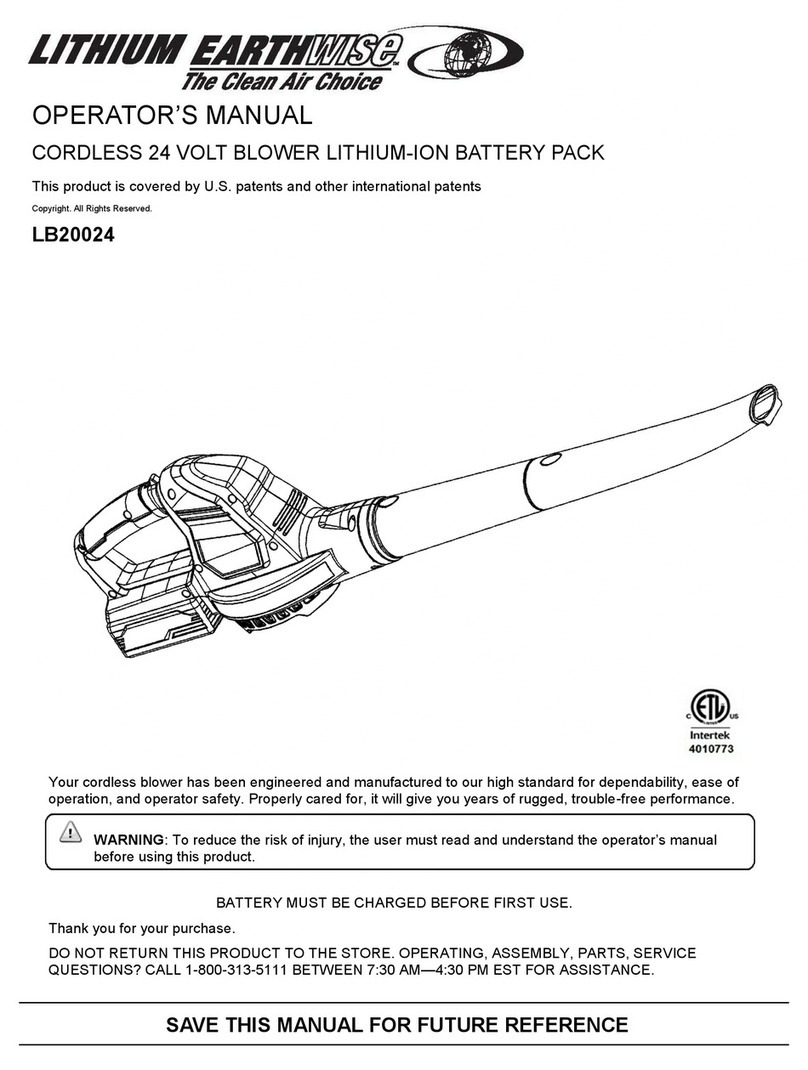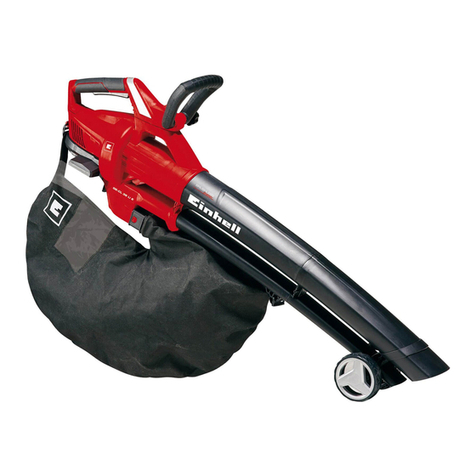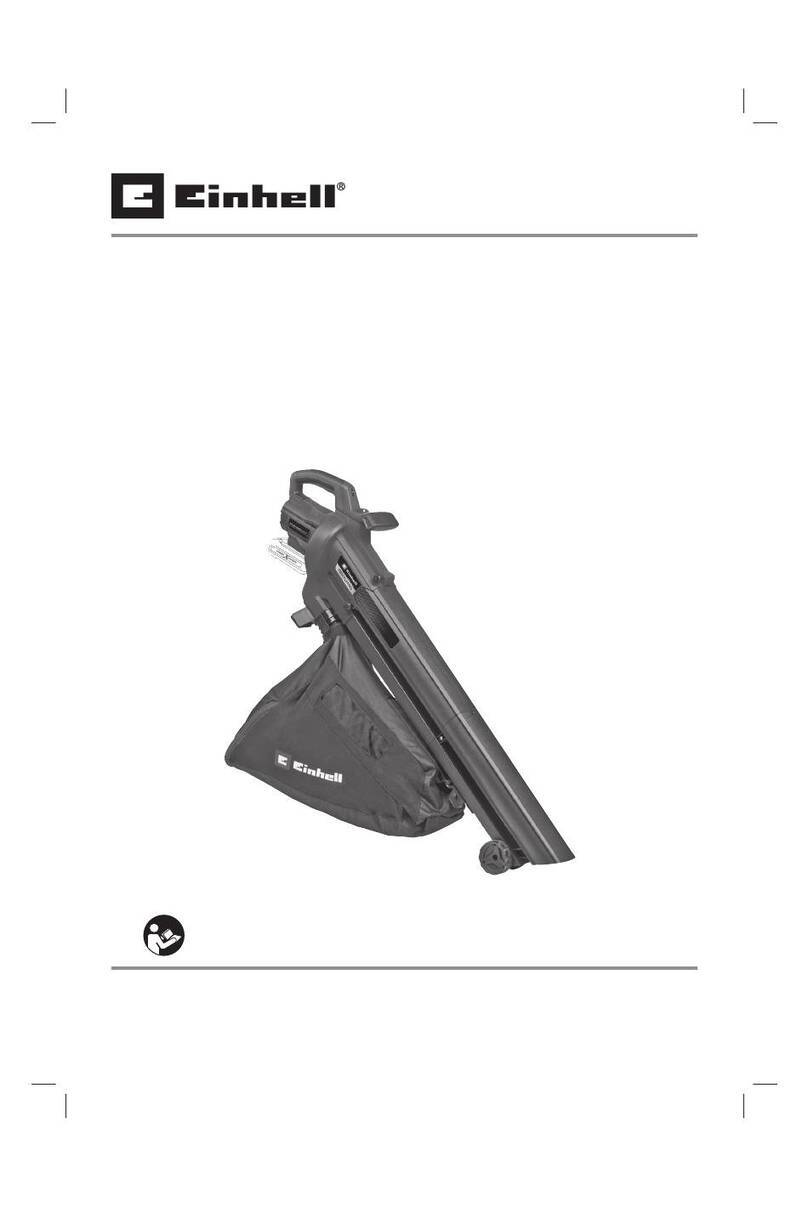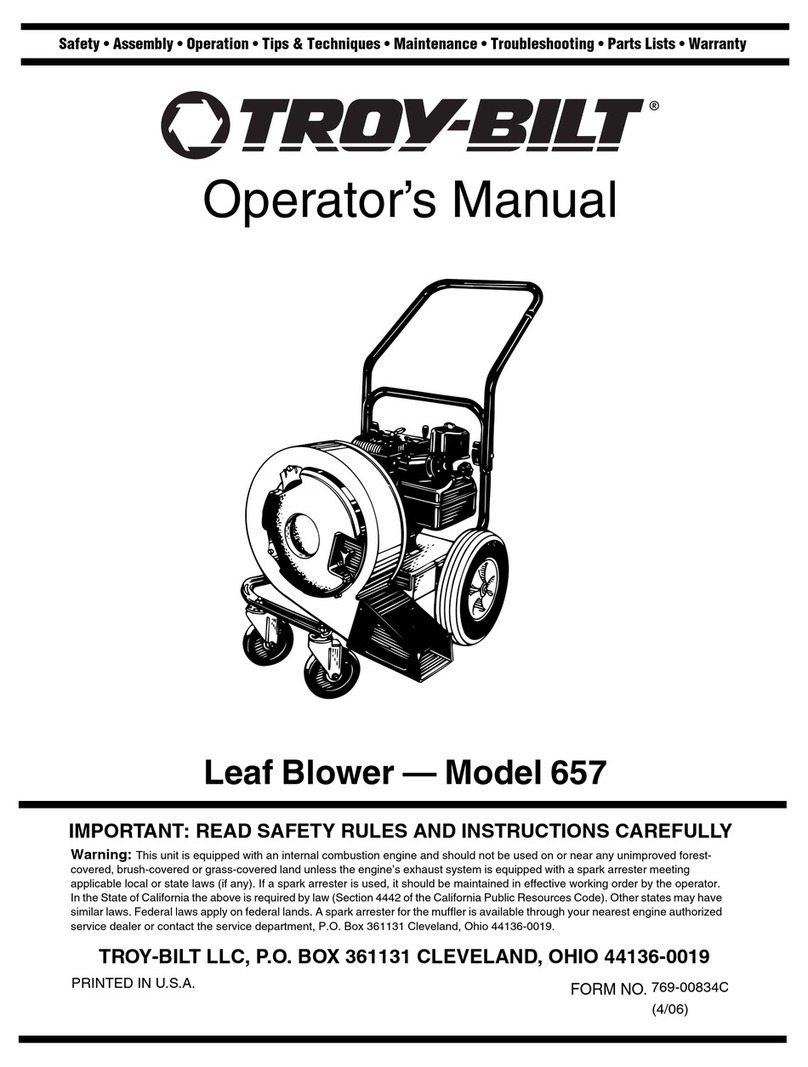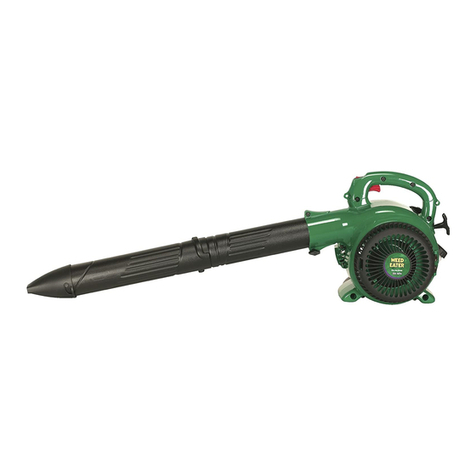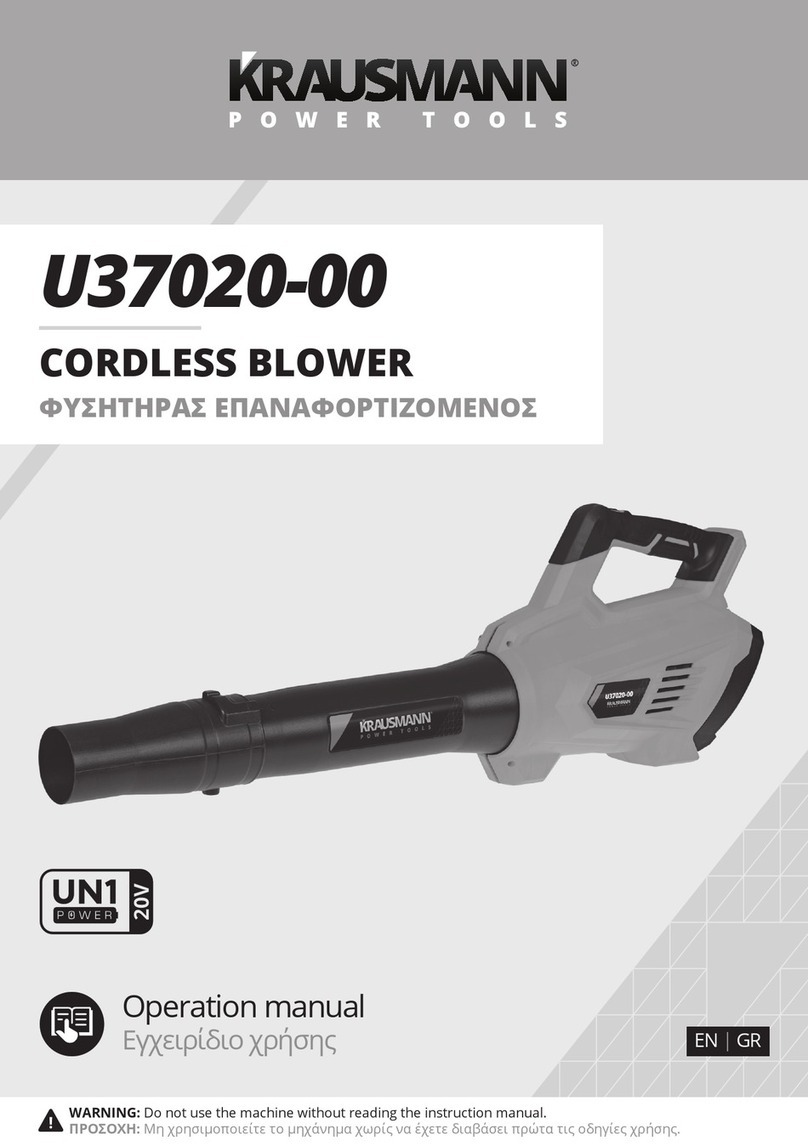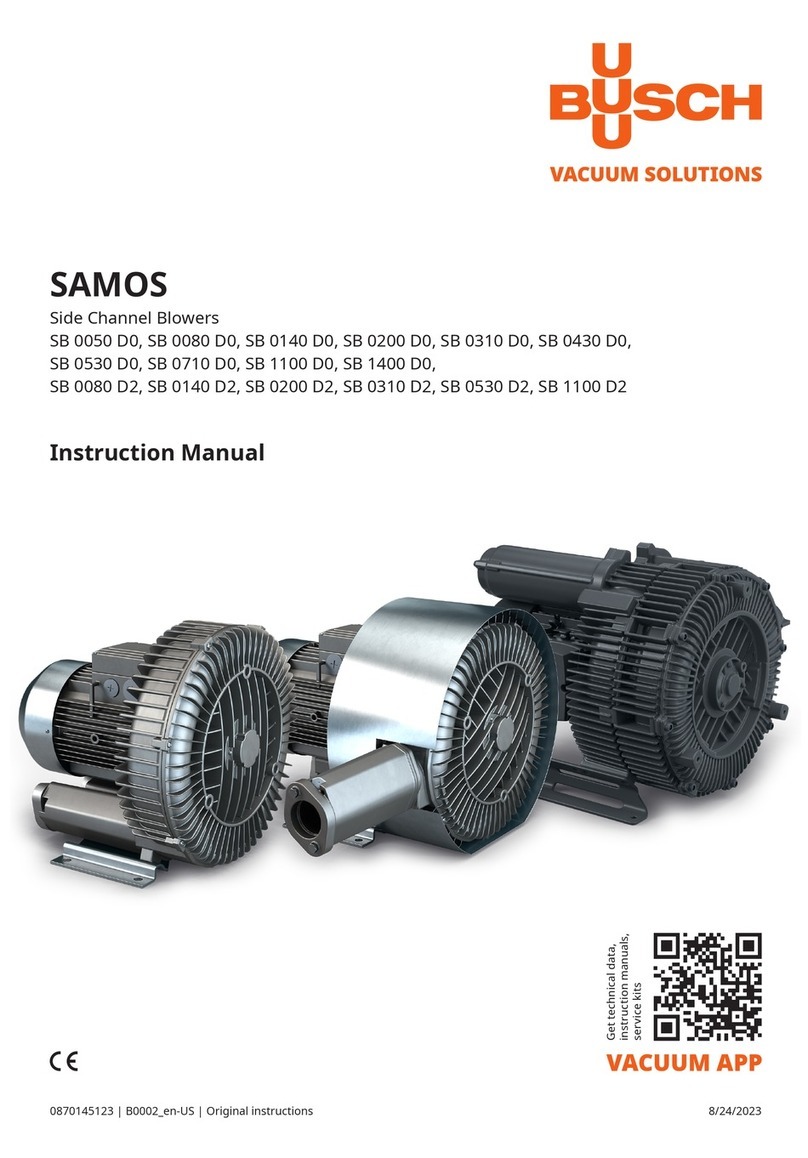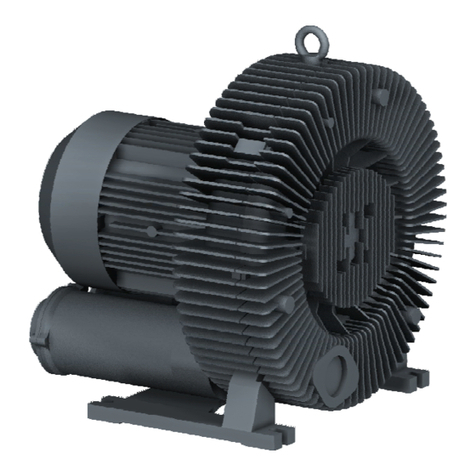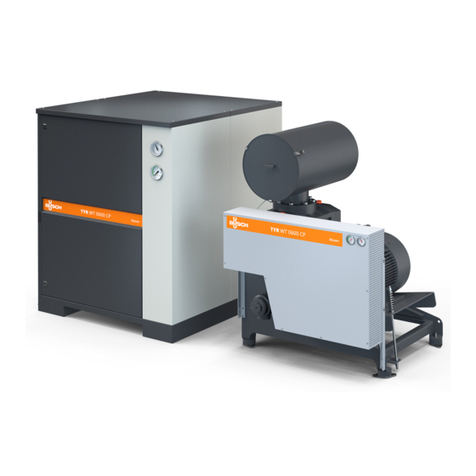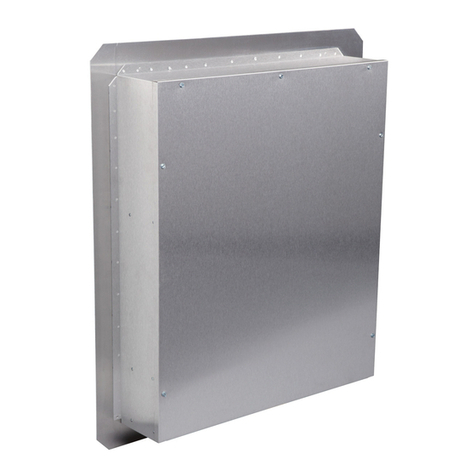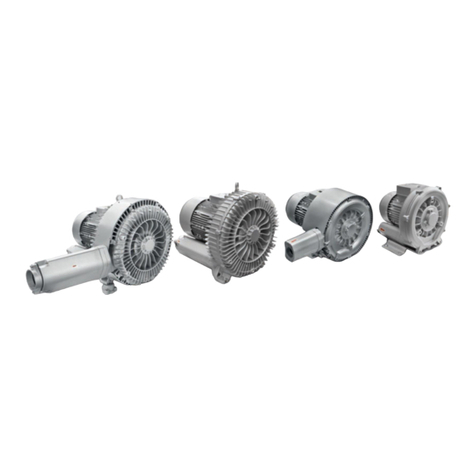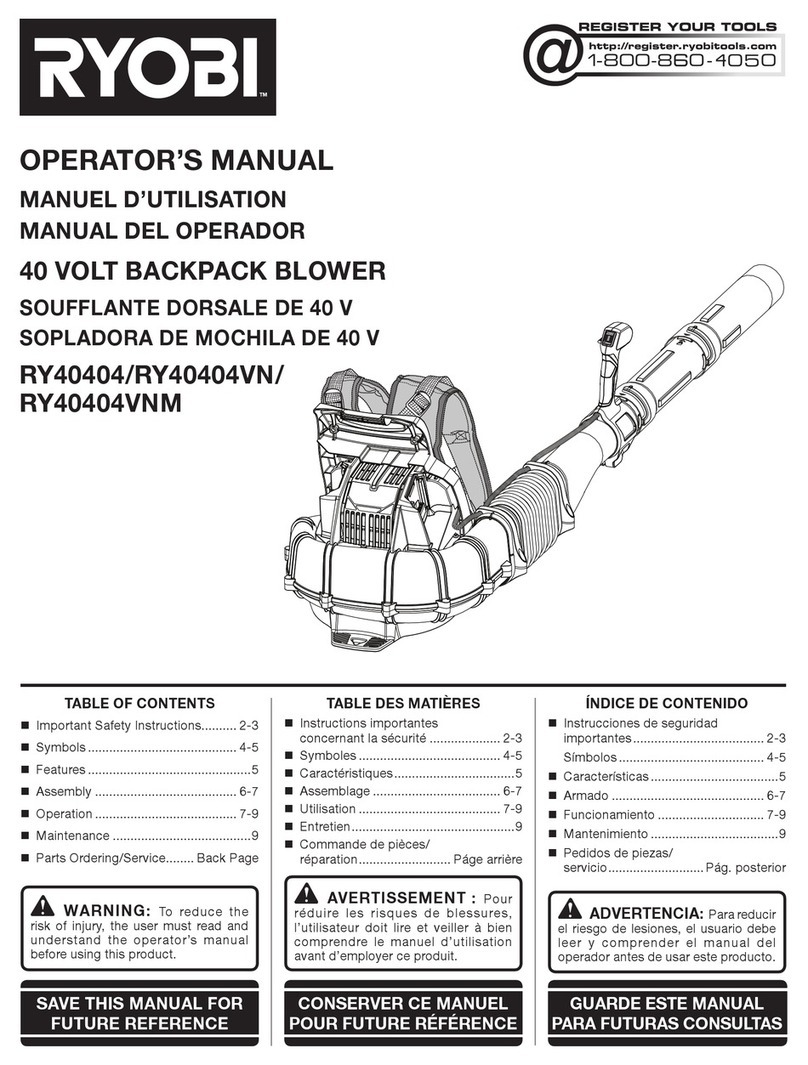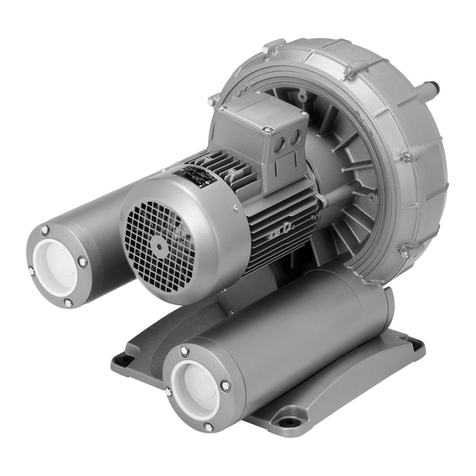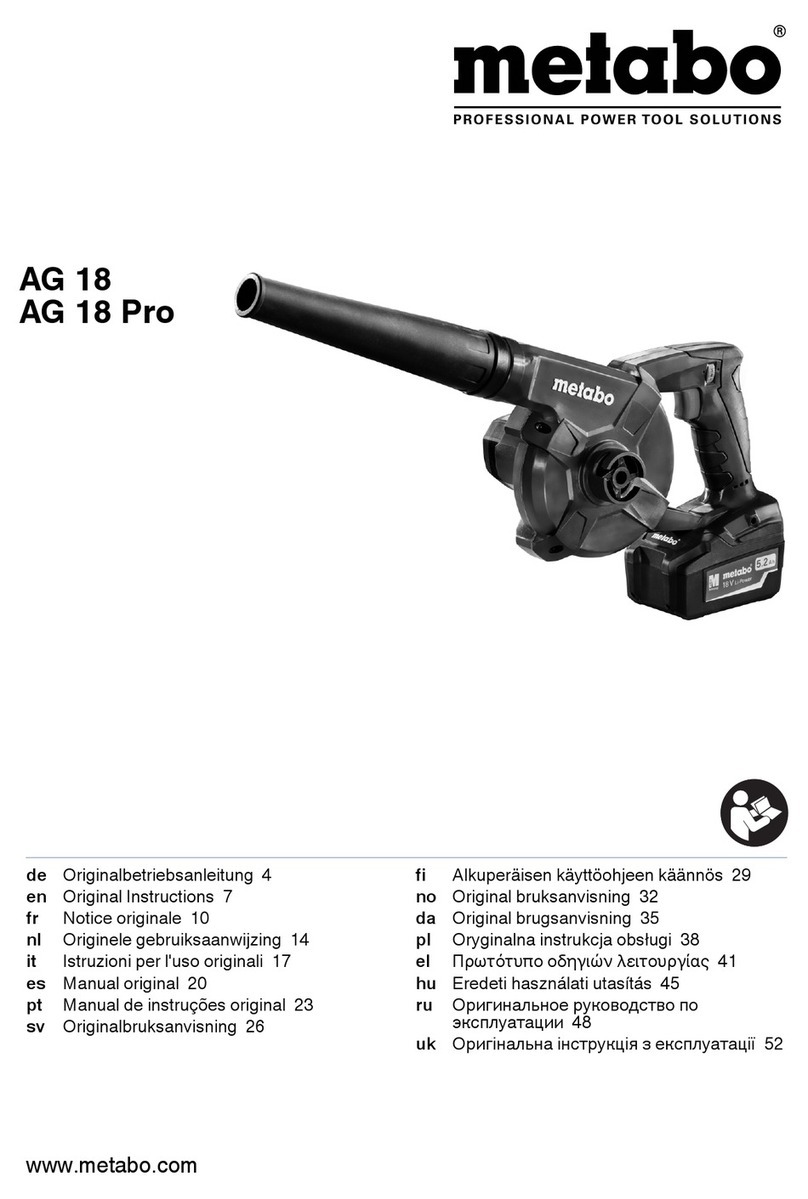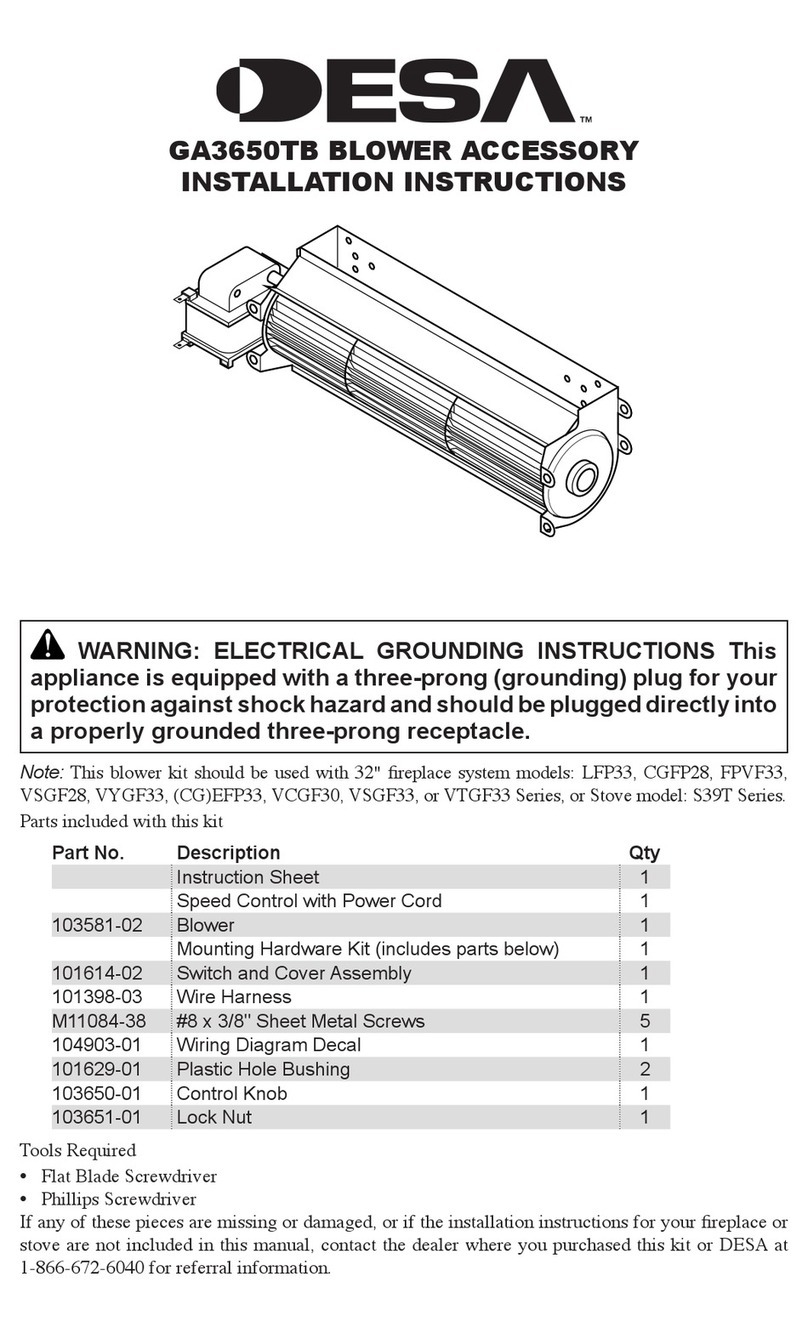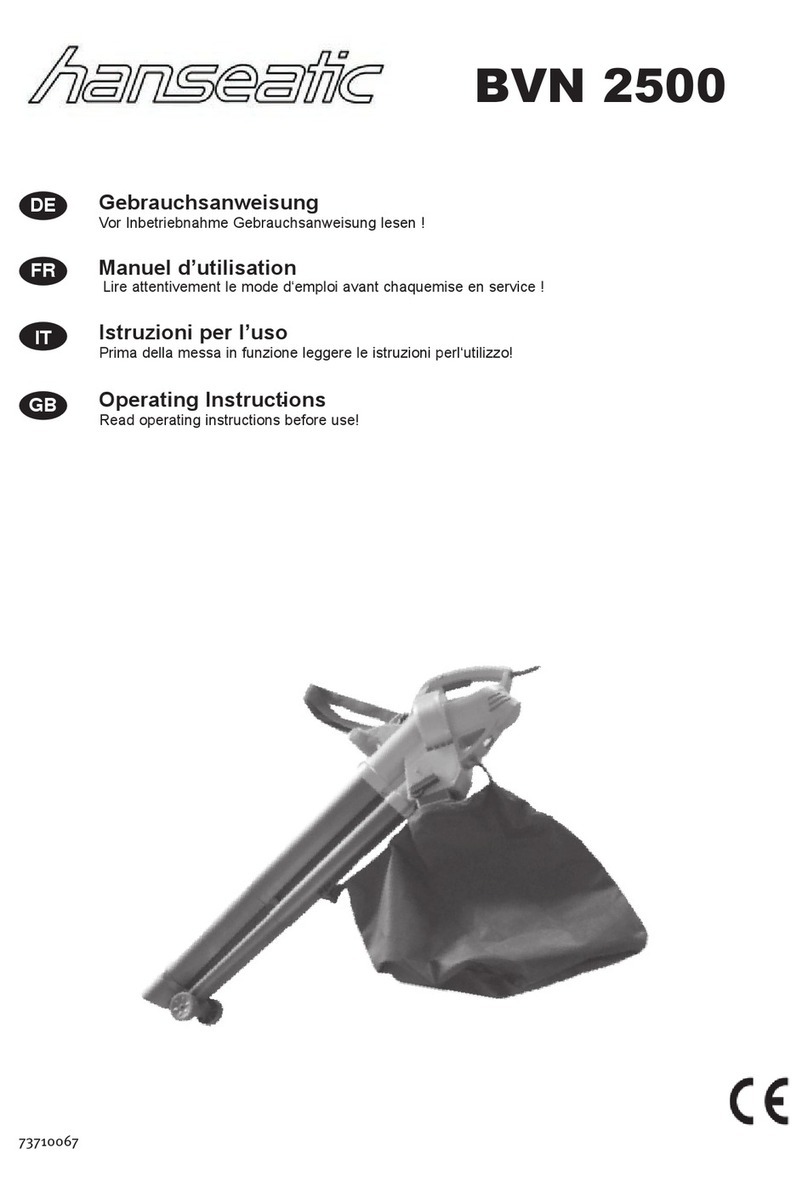Product Description
Use
The side channel blower is intended for
–the suction
–the compression
of
–mixtures of dry non-aggressive and non-toxic gases and/or dust
according to the identification on the nameplate of the side
channel blower (explanation see below)
Conveying media with a lower or higher density than air leads to an in-
creased thermal and/or mechanical load on theside channel blower
and is permissible only after prior consultation with Busch.
According to the directive /E5(“ATEX ”) theside
channelbloweris made for the intended use in potentially explosive
areas ac-cording to the data given on the nameplate of theside
channelblowerand on the data given on the nameplate of the drive
motor.
The classification on theside channel bloweris to be read as follows
(interpretations of equipment categories and zones for information
only; the relevant laws, directives and standards are literally binding;for
temperature classes and explosion groups see E. Brandes, W. Möller
“Sicherheitstechnische Kenngrößen, Band 1: Brennbare Flüssigkeiten
und Gase”, ISBN 3-89701-745-8 (or equivalent source)):
If the classifications with regard to the conveyed gas/air or dust/air
mixture on the one side and the environment of theside channel
bloweron the other side vary, the nameplate of theside channel
blowerreads the classification with regard to the conveyed gas/air or
dust/air mixture first and next, after a slash, the classification with re-
gard to the environment (example “3/2”).
II 3/2G c T3
Group II, for non-mining applications,
explosive atmosphere consisting of a mixture with air of flammable
substances in the form of gas in the process gas not likely to occur in
normal operation but, if it does occur, will persist for a short periodonly
(equipment category 3, for zone 2),
in the environment explosive atmosphere consisting of a mixture with
air of flammable substances in the form of gas, vapour or mist likely to
occur in normal operation occasionally (equipment category 2, forzone
1),
type of protection constructional safety,
for gases temperature class T3 in the process gas and in the environ-
ment.
Not for potentially explosive dust/air atmospheres.
II 3/2D c T 125°C
Group II, for non-mining applications,
in the process gas explosive atmosphere in the form of a cloud of com-
bustible dust in air not likely to occur in normal operation but, if it does
occur, will persist for a short period only (equipment category 3, for
zone 22),
in the environment explosive atmosphere in the form of a cloud of
combustible dust in air likely to occur in normal operation occasionally
(equipment category 2, for zone 21),
type of protection constructional safety,
maximum permissible surface temperature for the dust/air mixtures in
the process gas and in the environment greater equal 125 °C (acc. to
EN 50281-2-1 or IEC 61241-2-1 resp.).
Not for potentially explosive gas atmospheres.
II 3G T3
Group II, for non-mining applications,
in the process gas and in the environment explosive atmosphere con-
sisting of a mixture with air of flammable substances in the form of gas
(in the environment also vapour or mist) not likely to occur in normal
operation but, if it does occur, will persist for a short period only
(equipment category 3, for zone 2),
for gases temperature class T3 in the process gas and in the environ-
ment.
Not for potentially explosive dust/air atmospheres.
II 3D T 125°C
Group II, for non-mining applications,
in the process gas and in the environment explosive atmosphere in the
form of a cloud of combustible dust in air not likely to occur in normal
operation but, if it does occur, will persist for a short period only
(equipment category 3, for zone 22),
maximum permissible surface temperature for the dust/air mixtures in
the process gas and in the environment greater equal 125 °C (acc. to
EN 50281-2-1 or IEC 61241-2-1 resp.).
Not for potentially explosive gas atmospheres.
The gas shall be free from vapours that would condensate under the
temperature and pressure conditions inside theside channel blower.
The nominal value (=reference value for performance data) for the
temperature of the process gas is 15 °C. The max. allowed temperature
of the inlet gas is 40 °C.
The nominal value for the ambient temperature is 25 °C. The min. al-
lowed ambient temperature is -30 °C. The max. allowed ambient tem-
perature is 40 °C.
Binding data with regard to the allowed differential pressure are to be
read from the nameplate (value with negative sign (“-”) for vacuum
operation, value without sign for pressure operation). The data is valid
for ambient temperatures up to 25 °C and location altitudes up to1000
m above sea level. Higher ambient temperatures reduce the al-lowed
differential pressures by up to 10 percent at 40 °C. In case ofplacement
in altitudes beyond 1000 m above sea level the allowed dif-ferential
pressure shall be agreed upon with Busch.
Theside channel bloweris intended for continuous operation. Frequent
switching on and off increase the coil temperature. In this case the op-
erating conditions shall be agreed upon with Busch.
/NLYUSEVARIABLEFREQUENCYDRIVEINACCORDANCEWITH
ACCOMPANYINGINSPECTIONDOCUMENTFORINVERTERFEDEXPLOSION
PROOFMOTORS
The above mentioned limits must be strictly complied with. In partic-
ular the allowed differential pressures must not be violated by means
of throttling on the suction side or pressure side. Violation of the lim-
its results in increased temperatures and thus puts the explosionsafety
of theside channel blowerat risk.
The maximum allowed pressure on the pressure connection(d)is
2bar abs(the nameplate of theside channel blowerindicates thevalid
pressure). By means of process control it must be made surethat the
maximum allowed pressure will not be exceeded.
Product Description
